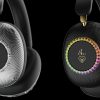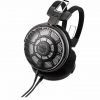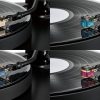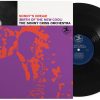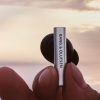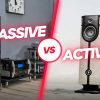What’s the job of a speaker cable?
It’s to convey, without degrading the signal, an alternating-current (AC) voltage that’s an electrical equivalent of the air-pressure changes (sound waves) that struck the original microphones. After all, when you’ve spent all those dollars on an expensive receiver – processor or amplifier, and an extensive music and video collection on CD, DVD, LP and tape, you don’t want the audio signal corrupted by a simple 20- or 40-foot length of wire between your amplifier and the loudspeaker. Once the signal arrives at the speaker terminals, which occurs almost at the speed of light, it’s the loudspeaker’s job to transform the rapidly varying electrical signals back into acoustical waveforms–the same rapid changes in air pressure that strike your eardrum. It’s amazing, when you think of what’s happening, that stereo and home theater works as well as it does.
So how important is the speaker cable?
To read some of the ill-tutored theories bandied about in some high-end audio publications, you’d think the writers thought little notes danced along the cables to your speakers, subject to degradation and all manner of hazards in their brief transit to the loudspeakers. Indeed, some exotic cable manufacturers claim that their overpriced wire will actually improve the electrical signals!
In fact, the flow of electrical signals through copper cable is rather straightforward. The voltage produced by the amplifier end is the driving force, like water pressure in a hose. When you turn the tap at the end of the pre-filled water hose, the water flows out the other end immediately. In a similar manner, the electromagnetic field that represents the audio signals transmits through the copper cables at about 90% of the speed of light.
Resistance
The main impediment to moving audio frequencies through a copper cable is resistance, which results in a waste of power. If you use thicker cable, 16-gauge to 12-gauge (the lower the number, the thicker the cable and the less resistance there is), resistance can be kept to about 0.3 ohms or less, an insignificant value. For cables runs of less than 25 feet, 14-gauge cable is ample. For speaker cables shorter than 15 feet, 16-gauge is fine. Long runs of 25 feet or more require 12-gauge. You may run across fancy terms like “skin effect” and “transmission line.” These have no bearing on simple speaker cables. Suffice it to say that such artifacts only become significant to telephone engineers stringing miles of cable.
With audio frequencies, which normally range to 20,000 Hz or higher, there are no losses of consequence in thick copper cables. Measurements conducted years ago at the National Research Council in Ottawa showed losses of barely 0.25 dB at 100,000 Hz with 12-gauge copper cables.
Connectors
With all cables, you want bright, shiny connections at each end. The main reason gold-plated connectors are desirable is that they never tarnish. Copper may turn a dull brown or green after years, but a little sandpaper will restore the shine. Sturdy and well-made connectors are important here, regardless of type. Banana plugs, spades, pins, or bare wire can each make a fine electrical connection for speaker cables. It’s a matter of convenience and utility which you choose. Most good 5-way binding posts accept any of these.
Audio Interconnects
The coaxial cables used to connect your CD or DVD player carry “line-level” signals of a couple of volts, much tinier signals than the amplified output sent to your speakers, so those interconnects must be shielded with a braided metal mesh to prevent induced hum and other interference from corrupting the tiny audio voltage. These shielded cables are called “coaxial” because of the outer mesh shield, covered with insulation, that prevents the intrusion of external hum and noise-inducing fields. Just as important are the soldered connections between the outer braided mesh shield and the connectors at each end. So examine the terminations closely. On high-quality cables you can unscrew the metal connectors to scrutinize the soldered connections. For vinyl enthusiasts, it’s important that the cables between the turntable and the receiver or preamp are low-capacitance, to prevent changes in frequency response.
Digital Connections
What about digital connectors? For those who’ve wondered, there isn’t any difference in the digital audio signals conducted by a coaxial wire cable or a fiber-optic interconnect. In the former, the on and off pulses representing the binary code of a digital signal are conducted electrically; in the latter, a “Toslink” interconnect uses pulses of light to transmit the same code. Fibre-optic digital links are not subject to hum pickup or electromagnetic interference, a nice feature. But apart from that virtue, coaxial and optical digital connectors “sound” identical.
Video Interconnects
Video signals tend to be more fragile, especially over longer runs. Cables longer than 6 feet can wreak havoc through high-frequency losses, because video signals extend into the 12-megahertz range (that’s 12,000,000 Hertz!) for High Definition TV (HDTV). High-quality video cables are important, particularly when you are running component-video or S-video signals 15 or 20 feet to a projector. Because preserving video high frequencies correlates directly with the sharpness or clarity of the TV image, it makes sense to spend some money on good video cables so you can preserve the integrity of the video signals from a DVD or high-resolution source. Here again, connectors should be mechanically sound with a secure friction fit.
Be suspicious of brands that use pseudo-scientific language to justify their high prices or make claims that defy the laws of physics. There’s good reason some of those have been labeled “audio jewelery.”
Now you know what the pros know, and with the money you’ve saved by not buying smoke and mirrors, you can double your CD collection!


